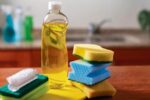Today’s consumers of soap and detergent are quietly observing and listening to how each product serves their daily rituals. From its effect on olfactory organs, its lather’s richness, and the feel it leaves on skin or fabrics, they’re making mental notes. Many hop from one product to another, chasing subtle differences that signal quality and care. Recognizing this silent scrutiny, creative manufacturers have moved ahead of the curve, innovating even before these consumers fully articulate their expectations—engineering textures, scents, and performance that resonate instinctively. As a manufacturer, you can take advantage of these creative inputs.
- High-Loading Bases and the New Language of Texture
The soap bar has become a story of experience — dense, creamy, luxurious, and personal. But producing that sensory profile isn’t luck; it’s formulation precision. High-loading soap bases are increasingly preferred because they allow richer integration of oils, fragrances, and emollients without breaking the physical balance of the bar. The chemistry behind them supports more uniform saponification, better perfume retention, and controlled hardness — critical for the feel consumers now associate with “quality.”
For cosmetic and toiletry manufacturers, this shift translates into flexibility. It’s now possible to engineer a bar that behaves differently under various skin conditions — creamy for dry climates, silky for humid ones — simply through feedstock control and additive management. In a market where first touch defines brand loyalty, texture has quietly become the new performance metric.
- Precision Formulation for Aesthetic Integrity
As homes seek functionality in bar soaps, they see aesthetics as a proxy for integrity in manufacturing and customer care. Yet intricate shapes, swirls, or layered color patterns are vulnerable to deforming or fading if base stability isn’t appropriately engineered. Here, premium soap noodles play a pivotal of a versatile, high-quality base that supports complex geometries, controlled solidification, and consistent processing across batches.
These noodles allow formulators to maintain weight, firmness, and drying characteristics while embedding fragrances, textures, or functional additives. This isn’t cosmetic decoration — it’s chemistry meeting design thinking. Manufacturers treating form as function can achieve repeatable, high-resolution soap designs that carry branding, textures, and embedded additives without compromise. In an era where consumers photograph their bathroom shelves, aesthetic precision is both science and marketing strategy.
- Cold-Wash Detergents and Energy-Savvy Chemistry
Laundry habits are shifting fast. Shorter cycles, cooler water — motivated by energy, fabric care, and ecological awareness. But standard surfactants falter below 30°C. The solution? Molecular-level reengineering: tailored surfactant chains, optimized fatty alcohol blends, and co-builders that perform in cold water without residue or odor.
For manufacturers, this is an opportunity disguised as a challenge. Low-energy detergents aren’t just eco-friendly — they’re cost-saving, consumer-relevant, and perfectly aligned with the behaviors of today’s households. Brands that ignore actual washing habits risk producing formulations that are scientifically correct but commercially irrelevant.
- Oleochemicals: Performance That Carries Responsibility
Sustainability is now a baseline in modern industrial processes. Oleochemicals — plant-derived fatty acids, alcohols, and esters — replace petrochemical surfactants while keeping foaming, cleaning, and fragrance performance intact. The difference is measurable: biodegradable, low-toxicity, and aligned with increasingly strict regulatory frameworks.
Practical impact is immediate:
- Bar soaps carry richer oils while retaining lather and firmness.
- Liquid detergents activate in cold water with superior soil release.
- Toiletries deliver smoother textures and better emollient performance while meeting export and environmental standards.
For manufacturers, oleochemicals are both strategy and duty: meeting consumer demand, achieving regulatory compliance, and opening doors to markets that reward sustainability. Chemistry here is not a cost — it’s an advantage.
Ultimately, the modern consumer of cleaning products won’t settle on sub-par products, whether in terms of functionality, aesthetics, or guaranteed formulations. They demand products that perform, feel premium, and align with their values. Manufacturers who prioritize premium inputs and formulations before labels engineer experiences that enhance customer loyalty. Soaps and detergents aren’t just created, they’re crafted, intelligently, responsibly, and profitably.








